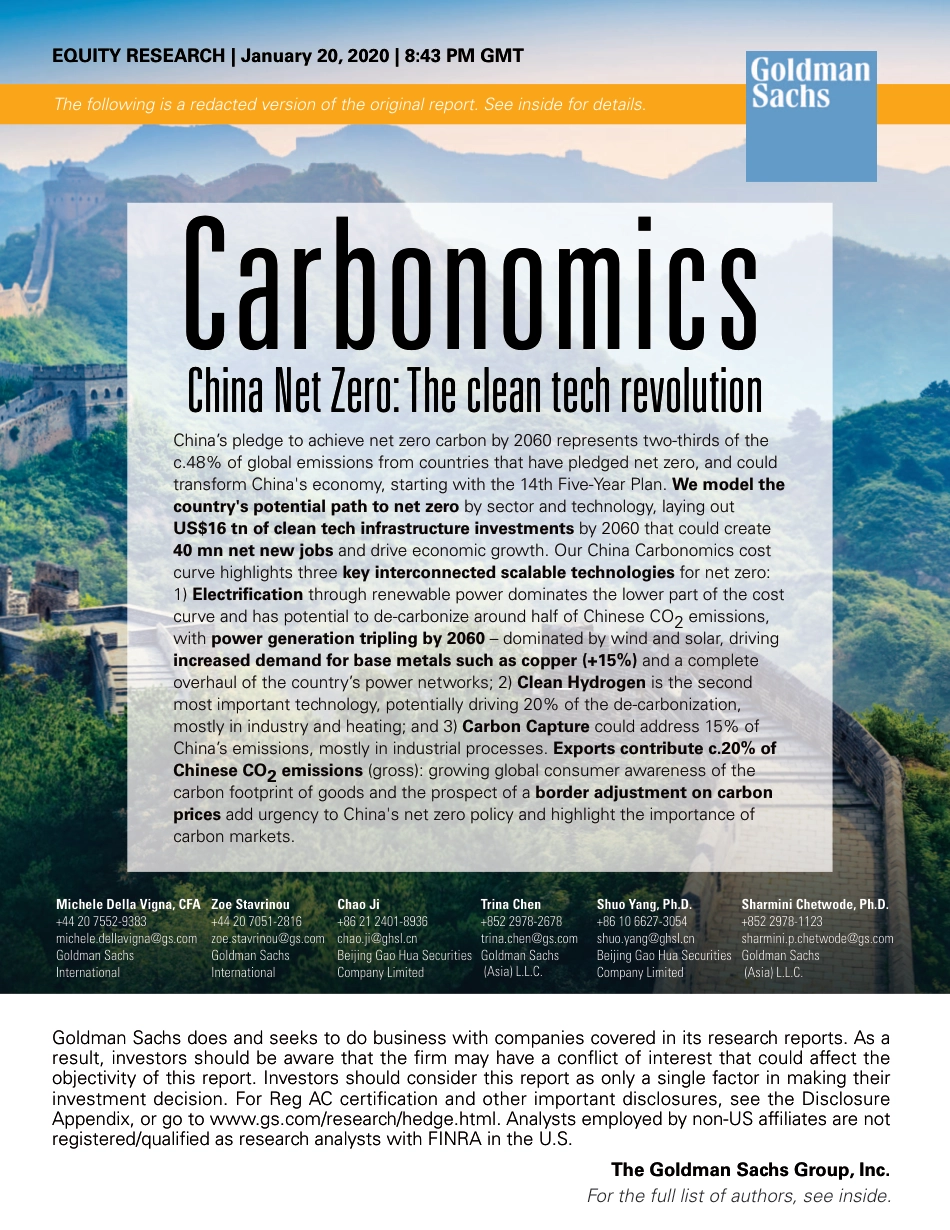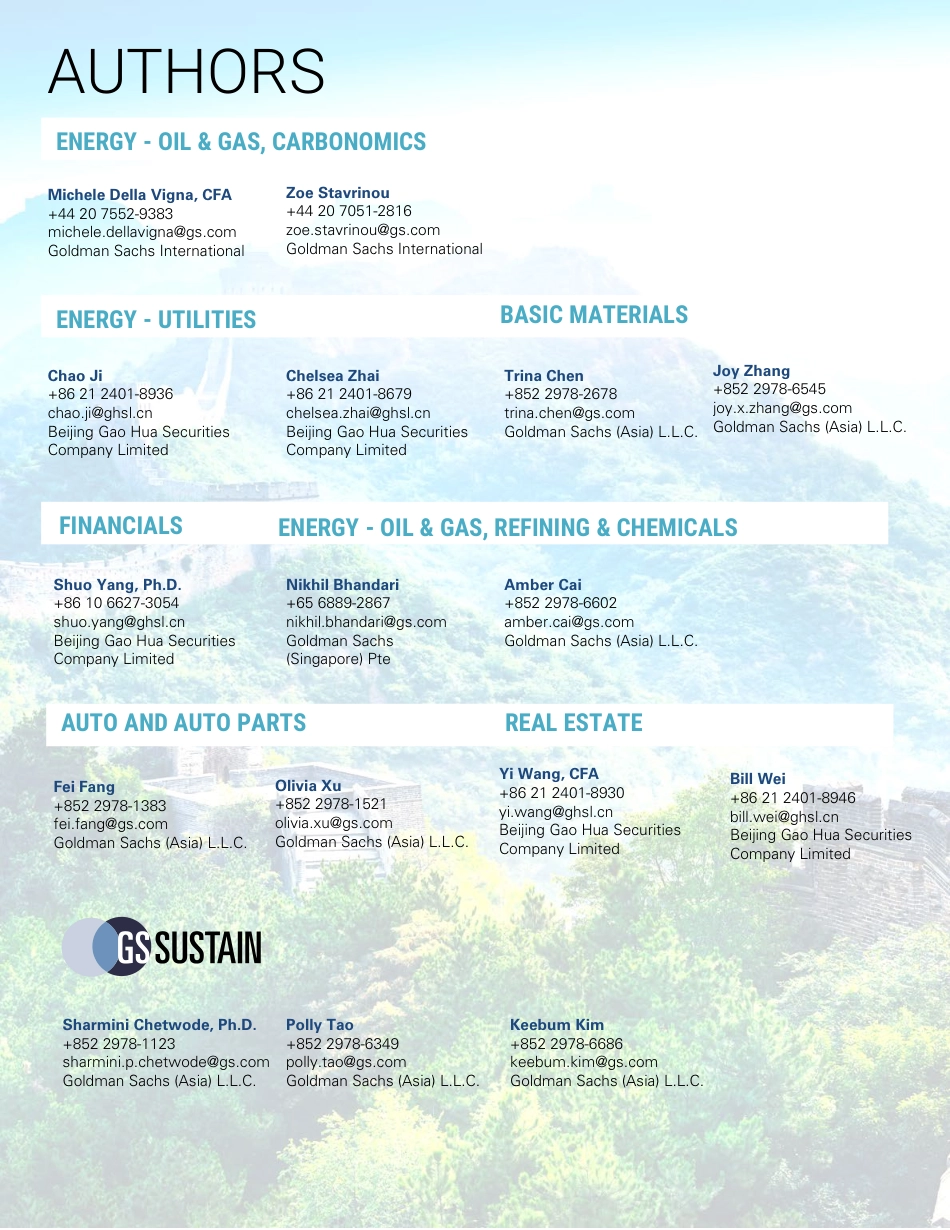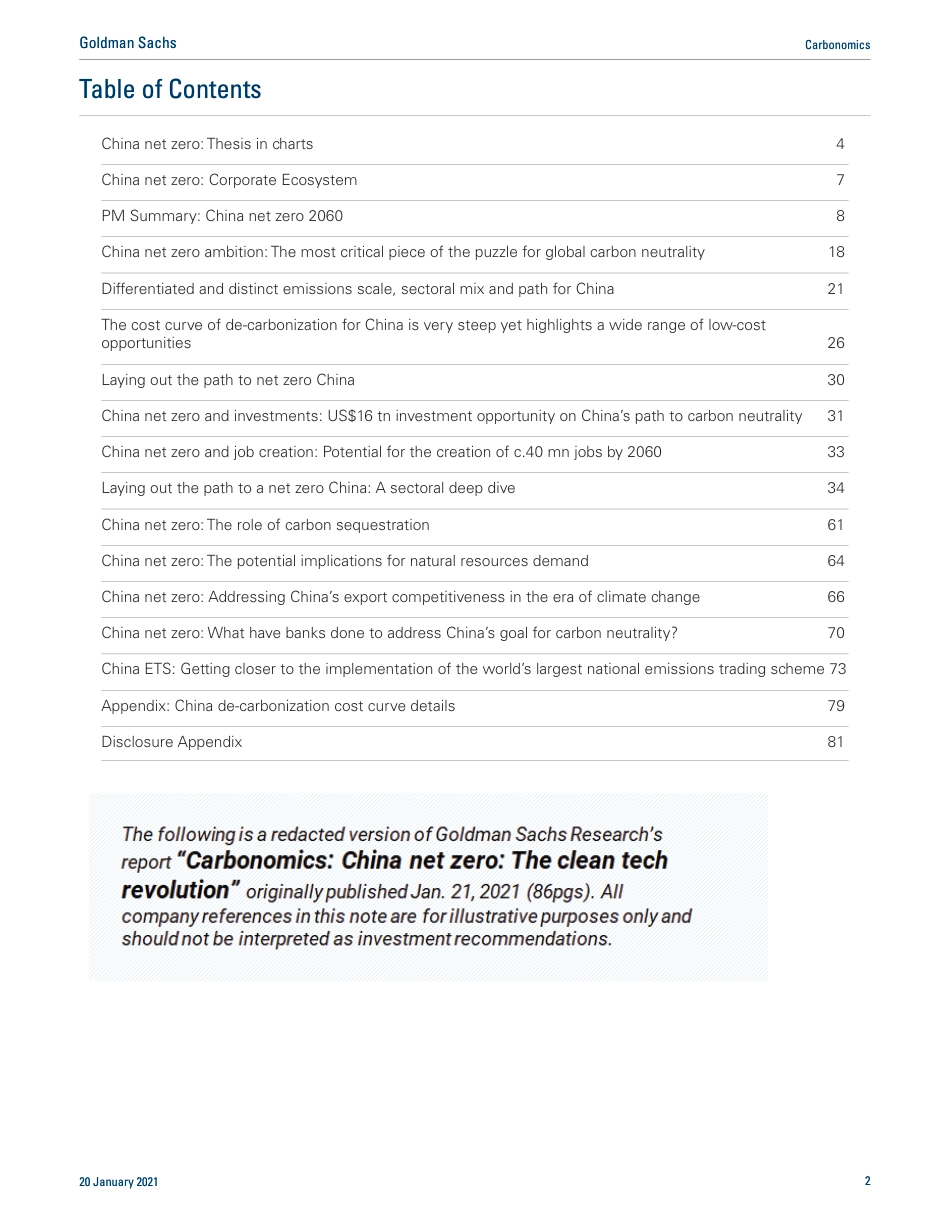EQUITY RESEARCH | January 20, 2020 | 8:43 PM GMTGoldman Sachs does and seeks to do business with companies covered in its research reports. As a result, investors should be aware that the firm may have a conflict of interest that could affect the objectivity of this report. Investors should consider this report as only a single factor in making their investment decision. For Reg AC certification and other important disclosures, see the Disclosure Appendix, or go to www.gs.com/research/hedge.html. Analysts employed by non-US affiliates are not registered/qualified as research analysts with FINRA in the U.S.The Goldman Sachs Group, Inc.Michele Della Vigna, CFA +44 20 7552-9383 michele.dellavigna@gs.com Goldman Sachs InternationalZoe Stavrinou +44 20 7051-2816 zoe.stavrinou@gs.com Goldman Sachs InternationalChao Ji +86 21 2401-8936 chao.ji@ghsl.cn Beijing Gao Hua Securities Company LimitedSharmini Chetwode, Ph.D. +852 2978-1123 sharmini.p.chetwode@gs.com Goldman Sachs (Asia) L.L.C.China’s pledge to achieve net zero carbon by 2060 represents two-thirds of the c.48% of global emissions from countries that have pledged net zero, and could transform China's economy, starting with the 14th Five-Year Plan. We model the country's potential path to net zero by sector and technology, laying out US$16 tn of clean tech infrastructure investments by 2060 that could create 40 mn net new jobs and drive economic growth. Our China Carbonomics cost curve highlights three key interconnected scalable technologies for net zero: 1) Electrification through renewable power dominates the lower part of the cost curve and has potential to de-carbonize around half of Chinese CO2 emissions, with power generation tripling by 2060 – dominated by...



